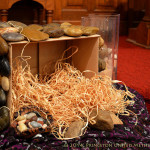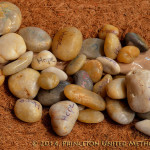

In the story as told in the gospel of John, said Catherine Williams in her sermon on April 6, Lazarus probably counted on Jesus coming to heal him. She imagined how he would have felt:
“You take to your fevered bed that night in hope. You rise next morning feeling frighteningly worse than last night, and you ask for news of Jesus. . . Now the sun has begun to set; Jesus is still not here. By now you feel yourself enveloped in a thick, dark cloud of disappointment, anger, fear, and abandonment. You wonder if this what death feels like…
Sometimes we feel abandoned, like Lazarus, Catherine said. She quoted theologian Gordon Lathrop’s book on the ‘little deaths’ we face in the course of living. Lathrop speaks of “moments of physical sickness or disability, or the moments of letting go, of moving on, or of facing failure, all of which can be described in metaphoric language as having something of death about them.”
To Lathrop’s listing she added: strained or severed relationships with living persons, mental and emotional pathologies, loss of employment or underemployment, loneliness, betrayal, and a host of other little deaths that begin to close in around us, cutting off our hope, our connections, even our faith, and leaving us entombed by circumstances beyond our control. . .
Near the end of her message, she pointed out that Lazarus’s name meant “God is my help,” and that he had no idea where, or how close, his help was.
He only knew he was trapped in circumstances utterly beyond his control, and could see no way out. Which means that for the person in the cave, all I’ve said until now may mean absolutely nothing. But the fact that you are here in this gathered community of faith is symbolic of something hopeful. It symbolizes that you are part of a wider community that cares, and that believes the life of God has the power to destroy death, and that the light of Christ cannot be overpowered by darkness.
(The entire message is here.)
Altar design by Debbie Meola and photos are by Edem Timpo.
